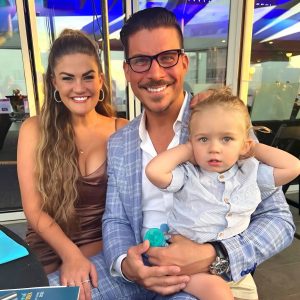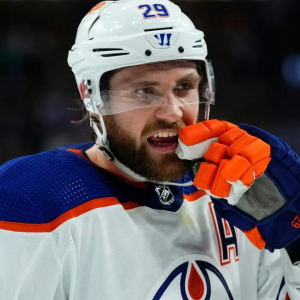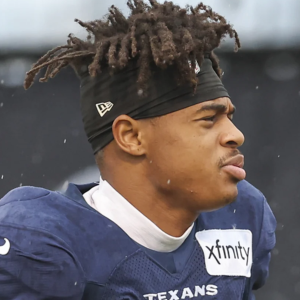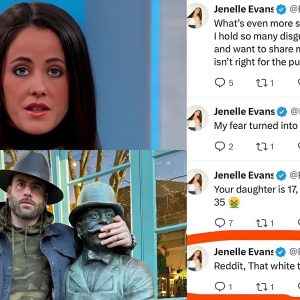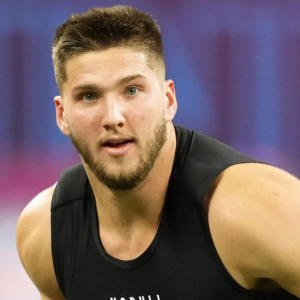It’s pretty safe to say that being bought out was a positive experience for Oliver Ekman-Larsson.
At the time of the buyout, Ekman-Larsson was owed $29 million over four more seasons, split between payments from Vancouver and the artist formerly known as Arizona. Instead, he’ll receive $19,333,333 of that split over eight years.
Since then, Ekman-Larsson has signed a one-year, $2.25 million contract with the Florida Panthers and then a subsequent four-year, $3.5 million AAV with the Maple Leafs. In other words, when OEL hits the end of what would have been his original contract in 2027, he’ll have earned an extra $15.75 million on top of his buyout, making back any money lost and then some. And then he’ll still have another year on the books at $3.5 million in Toronto.
Oh, yeah, and Ekman-Larsson also won the Stanley Cup this past season.
Yes, you could say that the buyout was ultimately a very good thing for OEL. But was it still worthwhile for the Vancouver Canucks to have done?
For them, the penalties are escalating.
The Canucks were set to have Ekman-Larsson on the books from 2023/24 through 2026/27 at a retained cap hit of $7.26 million.
In buying him out, they’ve swapped that out for a $146,667 penalty in 2023/24 ($7,113,333 in savings), $4,913,333 in 2024/25 ($4,913,333 in savings), $4,766,667 in both 2025/26 and 2026/27 ($2,493,333 in savings) and then four more years of a $2,126,667 (no savings, all penalty.)
But those are all just raw numbers. To find out if swapping that contract for those penalties was worth their while, we’ve got to look at the circumstances, and the only ones we can really study in any detail are the ones that transpired over the past calendar year.
The OEL buyout instantly bought the Canucks more than $7 million in cap space for the 2023/24 season. It was a one-time deal – the savings only decrease from there. But it was an important time for that deal to come about, being the very tail-end of the flat cap era. This was the year in which the Canucks, and the NHL entire, needed cap space more badly than ever.
Even with that $7+ million of space on hand, the Canucks still needed to do some bargain shopping during free agency, adding only the quartet of Carson Soucy ($3.25 million), Ian Cole ($3 mil), Teddy Blueger ($1.9 mil), and Pius Suter ($1.6 mil).
Even then, the Canucks still needed to trade Tanner Pearson and a pick for Casey DeSmith in order to bring their cap hit low enough to only be about $2.5 million over the cap ceiling, so as to fit within Tucker Poolman’s maximum $2.5 million in LTIR relief space, and then the subsequent dumping of Anthony Beauvillier to affect some in-season manoeuvrability .
It was tight, to say the very least.
So what would it have looked like with Ekman-Larsson still in the picture?
Well, that puts the Canucks down more than $7 million and up one left-handed defender. So, in that scenario, they probably don’t sign one of Soucy or Cole. That still leaves them about $4 million short on the cap structure they eventually made work, and that means shipping somebody out, and almost certainly a forward.
Beauvillier’s ticket out of town was already punched, and that move was necessary with or without Ekman-Larsson. There would have needed to be an additional departure. Chances are good that no one was going to take a chance on still-recovering Ilya Mikheyev. Trading Andrei Kuzmenko earlier on, before he’d tanked his trade value, might not have been the worst outcome in the world. But the Canucks would have had to do so while taking little to no salary back in return, taking a major trade chip off the table that would eventually help them land Elias Lindholm.
Two other possible candidates to be moved in this scenario would be Conor Garland and Brock Boeser, both of whom Canucks fans can be very glad were held onto.
So, we can see that there is a scenario in which the Canucks keep OEL, don’t sign one of their UFA defenders, trade an additional forward (or trade one earlier), and enter the 2023/24 season in roughly the same shape, cap-wise. But would they have been as good a team as the 2023/24 Canucks proved to be?
The Canucks start the season down a forward. And in having so much of their salary tied up in one player, they also hamstring their in-season flexibility that they might otherwise use to acquire players, as they did in the real 2023/24.
Having multiple players collect that equivalent salary, as opposed to just OEL, allow the Canucks more options as players came in and out of the lineup. Injuries to Soucy, Thatcher Demko, and Dakota Joshua, among others, created in-season roster and LTIR space that in turn allowed for the team to add both Lindholm (swapped out for Kuzmenko) and Nikita Zadorov.
Were OEL on the books, it would have had to be him going to LTIR – and staying there for a considerable time – or else not having enough room for any acquisitions.
There’s also the quality of play to consider. Could Ekman-Larsson have filled in fine enough for either of Cole or Soucy last year? Probably. Ekman-Larsson averaged 18:23 a night in Florida last season, Cole averaged 18:41, and Soucy averaged 17:29. They’re all in the same general ballpark.
With his 32 points, OEL drastically outscored the others, and his defensive metrics definitely outshone theirs, but then again he was playing on what would eventually become a Stanley Cup blueline.
Suffice it to say that, sure, if Ekman-Larsson played as well as he did in Florida for the Canucks instead in 2023/24, he could have covered the contributions of either Soucy or Cole (at double the price!)
But then one has to mention that the Ekman-Larsson who showed up in Florida was not the same one who had skated in Vancouver the past few seasons. Maybe it was the pressure of the contract, maybe the lack of team structure, but for whatever reason, OEL was not performing at even close to a top-four level for the Canucks.
Compare 2022/23 OEL to 2023/24 Cole and Soucy, and they start to look very comparable, and perhaps even constitute upgrades.
Really, it’s a combination of the player, the salary, and the flexibility derived thereof. There’s an argument to be made that Ekman-Larsson would have been better than Cole or Soucy last season. There’s not much of an argument that a left side of Quinn Hughes, OEL, and just one of Cole or Soucy would have been as good as the Canucks’ eventual actual left side of Hughes, Cole, Soucy, and Zadorov.
Then we can get into the knock-on effects. Start the 2023/24 season down a forward, and the team probably doesn’t perform quite as well to begin the year. Remove the team’s ability to add players in-season, and they probably don’t maintain their performance as well. That almost certainly translates to less success in the playoffs.
For some, that’s a non-factor. Some folks are Cup or bust. But most aren’t, and most will recognize that the steps the team took last season in making it all the way to Game 7 of Round Two were important steps.
Does Elias Pettersson re-sign if the team isn’t as competitive as it was last season? Does Filip Hronek? Do Jake DeBrusk and Danton Heinen take discounted UFA deals to sign in Vancouver without that run of success?
And on, and on, and on. All the while, Ekman-Larsson and his $7.26 million sits on the books until 2027, further complicating any attempts to restructure.
Really, one can think of the buyout exchange this way moving forward. Over the next two seasons, Ekman-Larsson’s buyout penalties and Soucy’s existing cap hit add up to roughly the same cap hit OEL himself would have incurred for those two seasons if not bought out. That means that the Canucks have secured an OEL equivalent for those two seasons at no extra cost, and added flexibility by the back-loaded nature of the buyout, which pushes more of the hit toward the future, when the cap will be higher.
Thus, OEL’s buyout was a huge benefit in 2023/24, and comes out as a wash at worst for 2024/25 and 2025/26. That one last year of a $4,766,667 penalty in 2026/27 will hurt, but Soucy’s contract will be done at that point, giving the team choice in how it seeks a replacement (and buying them time to develop in-house options.) It’s also an amount that, by that point, will be dwarfed by several major cap ceiling increases.
Those four years of $2,126,667 penalties thereafter? Annoying, but negligible in the grand scheme of things. With the cap expected to soar over $100 million by that point, they’ll hardly be noticeable – and who knows how competitive the team will still be at that point, anyway.
The Ekman-Larsson buyout bought the Canucks time and flex in a season where they had very little. It allowed them to not just survive the end of the flat cap era, but thrive, putting together easily the most memorable campaign of the past decade.
It also works out so as not to hamper them in any of the next crucial years, as the team tries its darnedest to keep that contentious window open.
Long story short: the OEL buyout worked out for quite literally everyone involved. For Ekman-Larsson himself, for the Florida Panthers, for the Canucks, and for the fans of both franchises. The only folks who might come out of this whole situation as losers are the Toronto Maple Leafs, who may not get quite the return on that four-year, $14 million deal they just handed to Ekman-Larsson.
But then the Maple Leafs being losers is just another win for everyone else.
